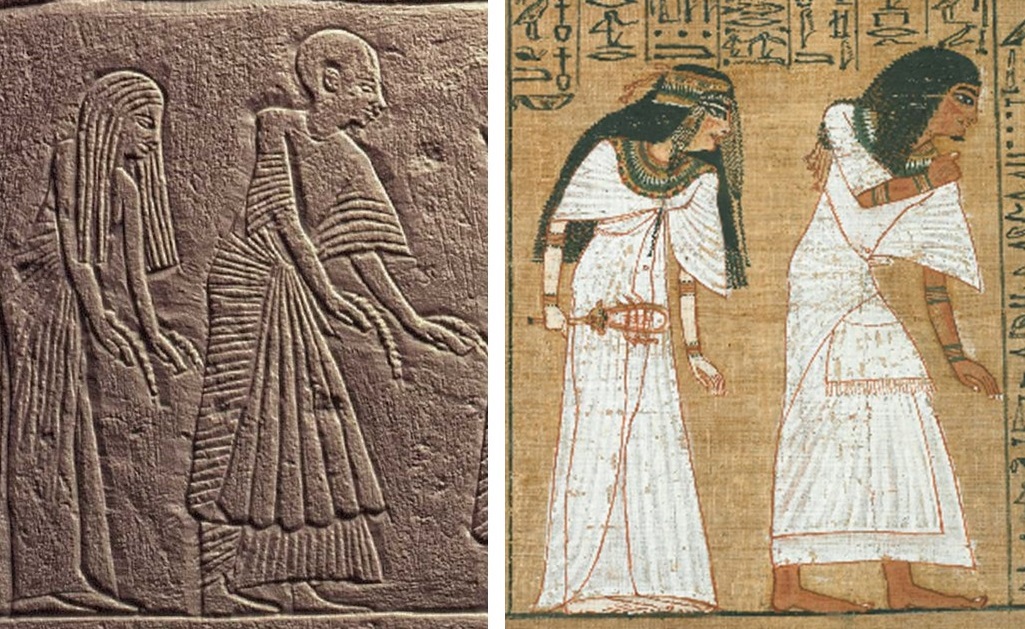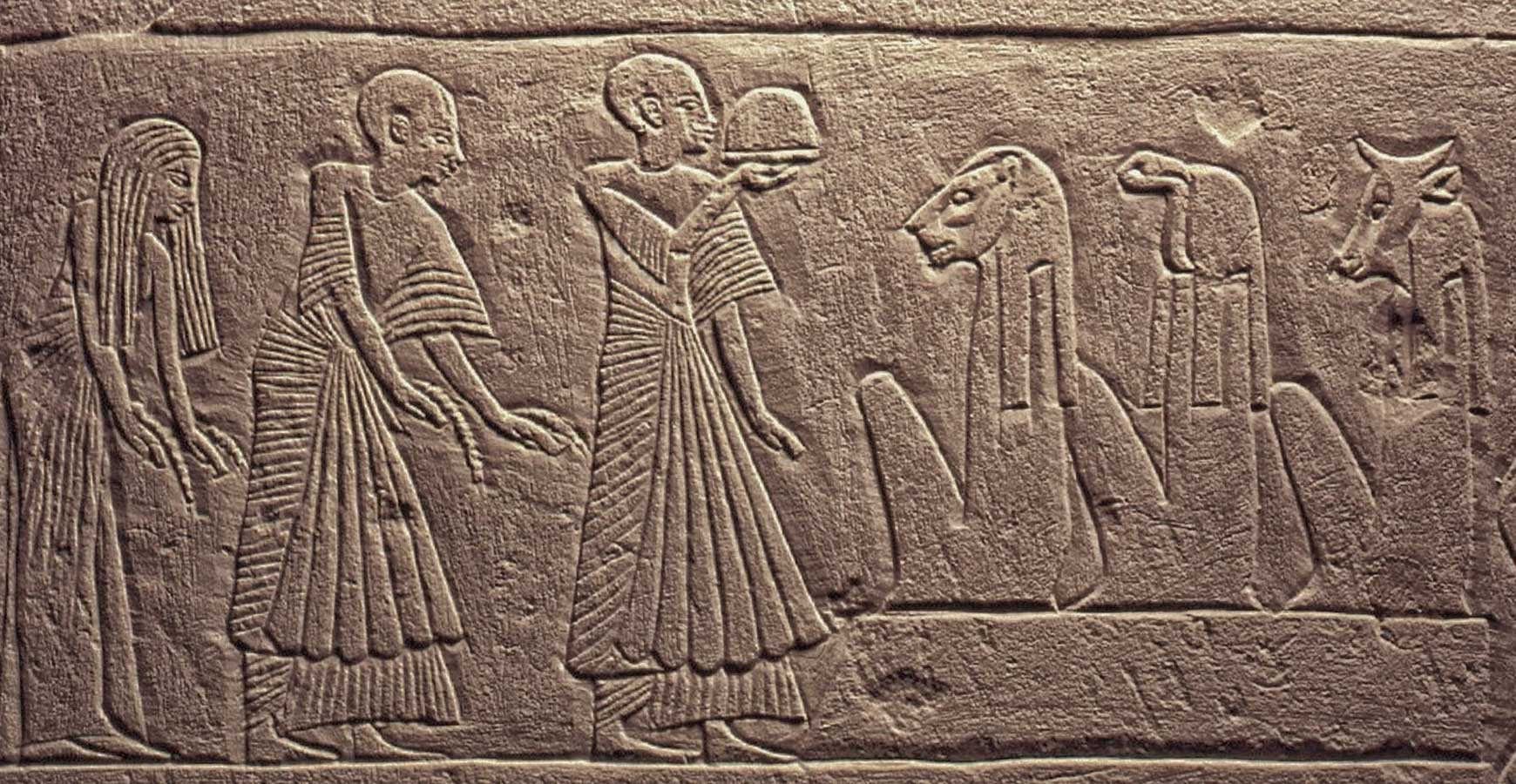Pa-aton-em-heb (“The Sun Disk is in Feast”), was “Royal Singer” of the end of the Amarna period.
It seems that his tomb was originally in Saqqara (although the location remains unknown) and was dismantled. Some blocks of the chapel are nowadays in the Rijksmuseum van Oudheden in Leiden.
About the decoration.
The decoration remembers the typical style of the post-amarna period in Saqqara. Moreover, the iconography shows already items, which belong to the traditional belief of ancient Egypt.
Osiris Sphere.
Pa-aton-em-heb and his wife Tipuy appear adoring Osiris flanked by Isis and Nephthys, while the Four Sons of Horus are in front of him.
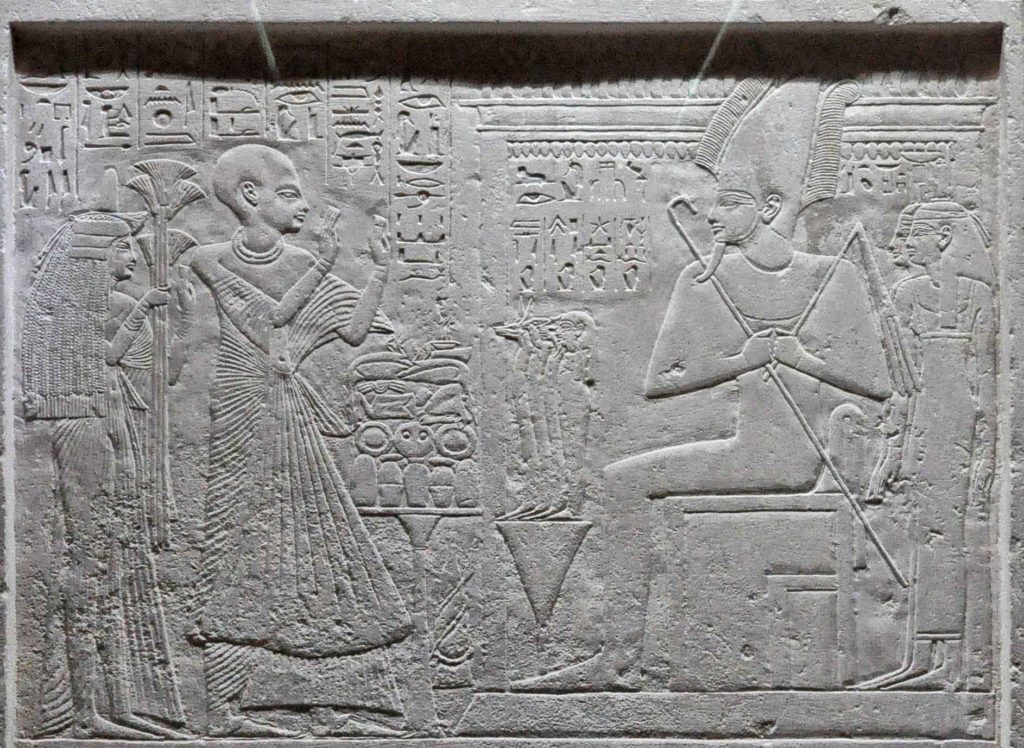
The proper name still retains the reminiscent of the atonism of Amarna, but the traditional religion had been restored. So the resurrection of the dead happened again in the Osiris sphere.
Chapter 110 of the Book of the Dead.
There is another remain, that proofs how the funerary belief of Pa-aton-em-heb also came back to the tradition. In one of the walls of the chapel the artist depicted the Chapter 110 of the Book of the Dead. This religious text disappeared during the Amarna period.
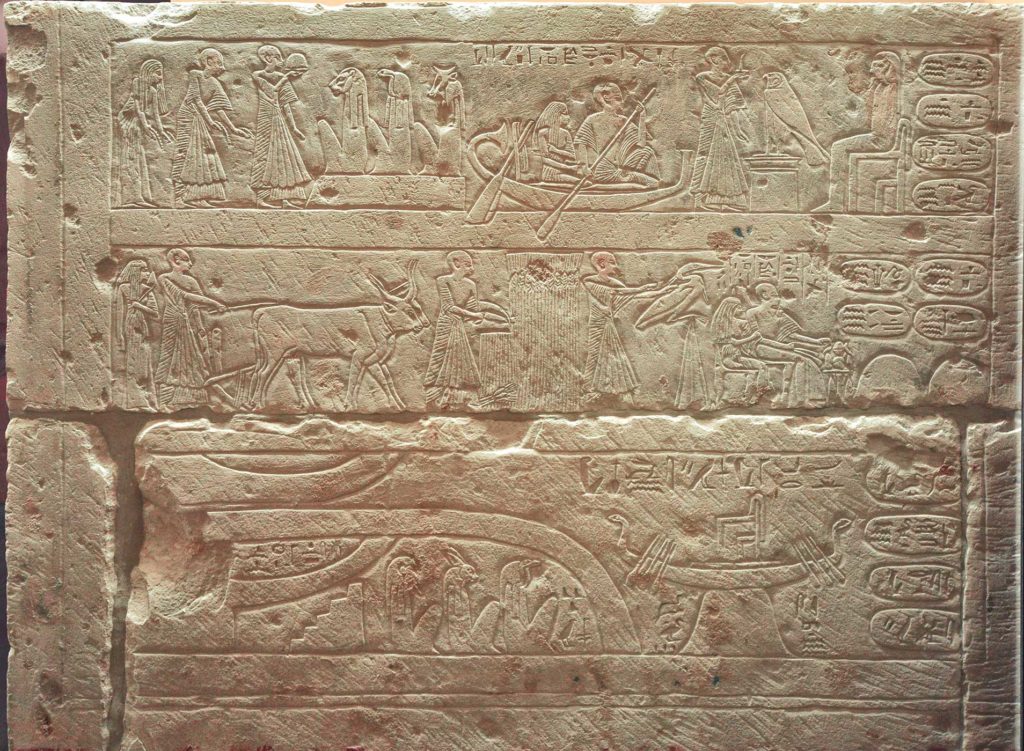
This chapter depicts the entrance of the dead into the “Field of Iaru“. Here the deceased has access to fertile fields providing him with food eternally. It was very common to depict this scene in Papyri; and from the end of Dynasty XVIII also in walls of tombs (obviously not in Amarna). That is what we can see in the tombs in Saqqara of Pa-aton-em-heb and Horemheb.
The Swinging Hair.
But there is something else that attracts the attention: the pose of Tipuy. She gets into the Fields of Iaru slightly leaning forward and with the hair in apparent swing.
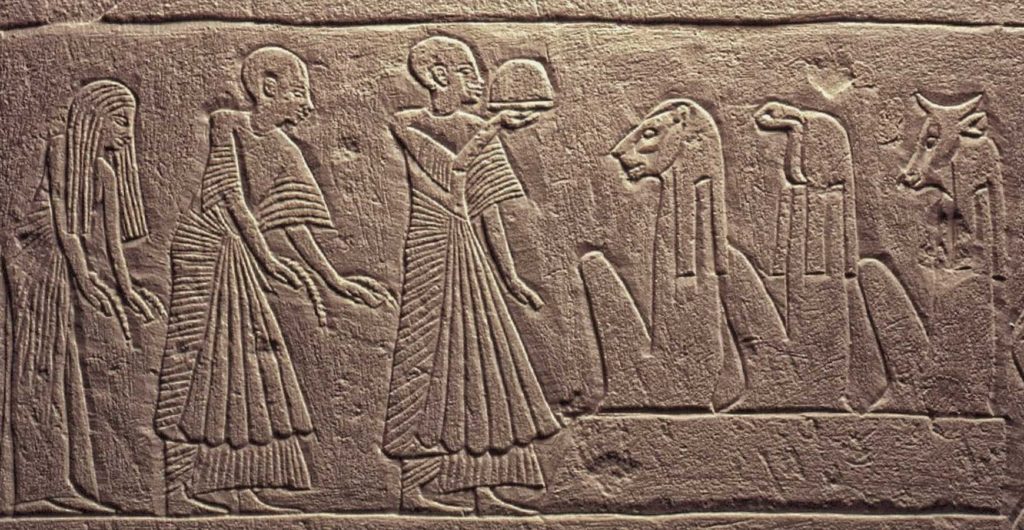
Hair and movement in Egyptian Art.
The artists in ancient Egypt used the bending hair for drawing body movements. We find that in depictions of:
- mournig women for expressing the dynamic gesture of lament,
- in scenes of dancing,
- in gestures of respect and reverence

There are some similar examples of vignettes of the Book of the Dead. In them the dead (or one of them if they are a couple), bends the body and leans the hair for expressing respect. For example the papyrus of Anhai (Dynasty XIX), the Papyrus of Ani (Dynasty XIX), the Papyrus of Ramose (Dynasty XIX) or the Papyrus of Henuttawy (Dynasty XXI). As long as I know none dates from before Dynasty XIX.

A Contribution from Amarna to Tradition?
The Egyptian artists in Amarna could also depict hair in a more plastic and less rigid way. In fact that followed one of the identity signature of the art of Amarna: more dynamic and natural.

So, to depict Tipuy (the wife of Pa-aton-em-heb) with the hair swinging is not new as a concept: the hair used as a resource to express movement.
But, as long as I know, it is the first time that this concept of hair/motion is introduced in a vignette of the Book of the Dead.
If that were the case, we would be facing a contribution from Amarna to the iconography of traditional religion; materialized in the post-Amarna period and that will last later. For instance, compare here these two images…
